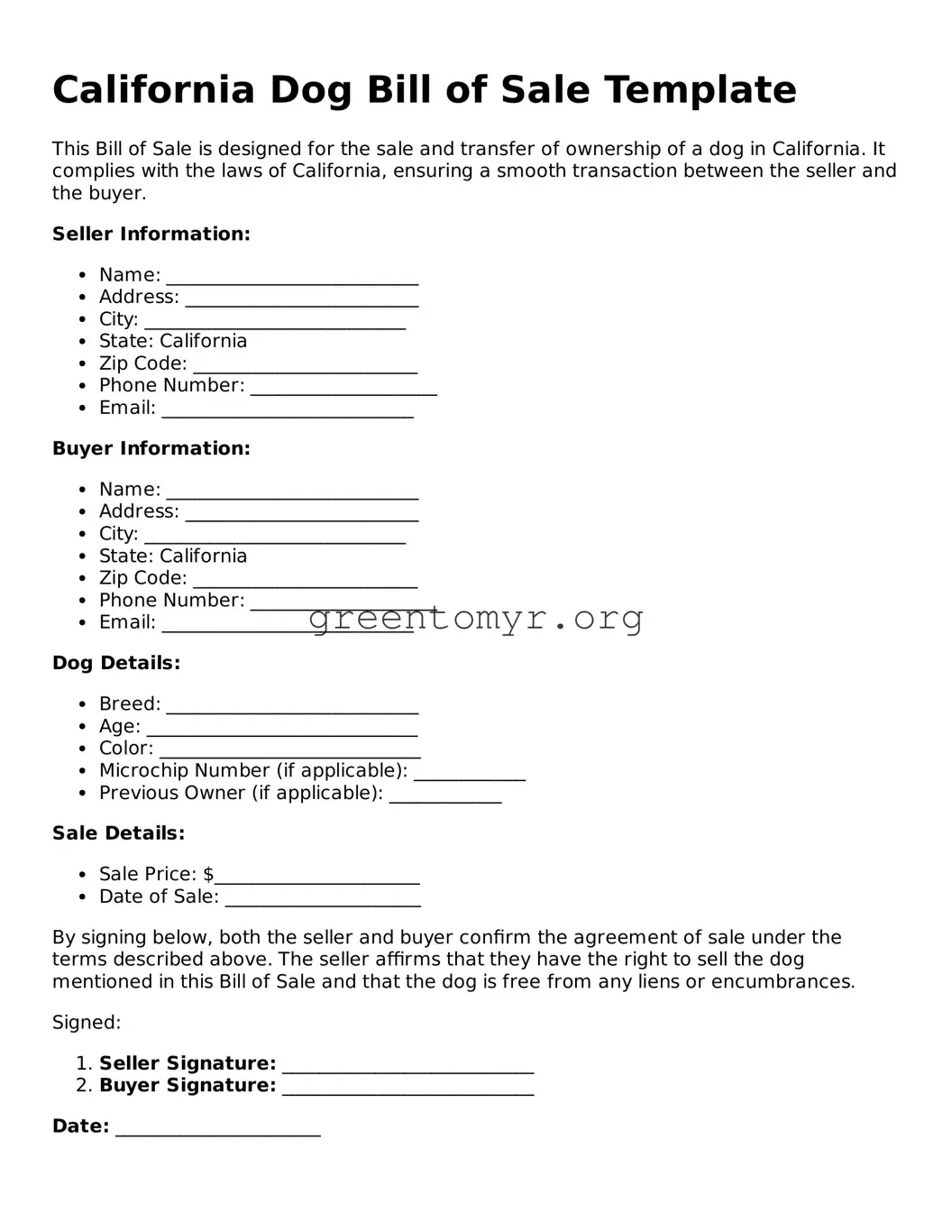What is a California Dog Bill of Sale?
A California Dog Bill of Sale is a legal document that records the transfer of ownership of a dog from one party to another. This form serves as proof of the sale and includes important details about the transaction, such as the names of the buyer and seller, the price, and a description of the dog.
Why do I need a Dog Bill of Sale?
Having a Dog Bill of Sale is beneficial for several reasons:
-
It provides a legal record of the transfer, which can be important for future reference.
-
It can help prevent disputes regarding ownership.
-
Some local authorities or shelters may require proof of ownership when registering the dog.
The Dog Bill of Sale typically includes the following details:
-
Names and addresses of both the seller and the buyer.
-
Description of the dog, including breed, age, color, and any identifiable features.
-
Purchase price of the dog.
-
Date of the transaction.
Is it mandatory to use a Dog Bill of Sale in California?
While it is not legally required to use a Dog Bill of Sale in California, it is highly recommended. Creating this document can protect both the buyer and the seller by providing clear evidence of the sale.
Yes, you can create your own Dog Bill of Sale. It should include all necessary information to ensure clarity and legality. There are also templates available online that you can use as a starting point.
Does the Dog Bill of Sale provide any warranties?
A standard Dog Bill of Sale does not typically include warranties regarding the health or behavior of the dog. However, both parties can agree to include specific terms. It’s advisable to discuss any concerns openly before finalizing the sale.
How do I complete the Dog Bill of Sale?
To complete the Dog Bill of Sale, follow these steps:
-
Fill out all required fields, ensuring accuracy.
-
Make sure both the seller and buyer sign the document.
-
Consider having a witness or notary public sign, although it is not required.
What if I lose my Dog Bill of Sale?
If you lose your Dog Bill of Sale, it may be difficult to prove ownership. It’s wise to keep multiple copies of this important document. If you cannot recover it, consider contacting the seller for a duplicate or seek legal advice on how to establish ownership.
You can find Dog Bill of Sale forms online through various legal document websites, local animal shelters, or even at some pet stores. Ensure that the form you choose complies with California regulations and includes all necessary details.
